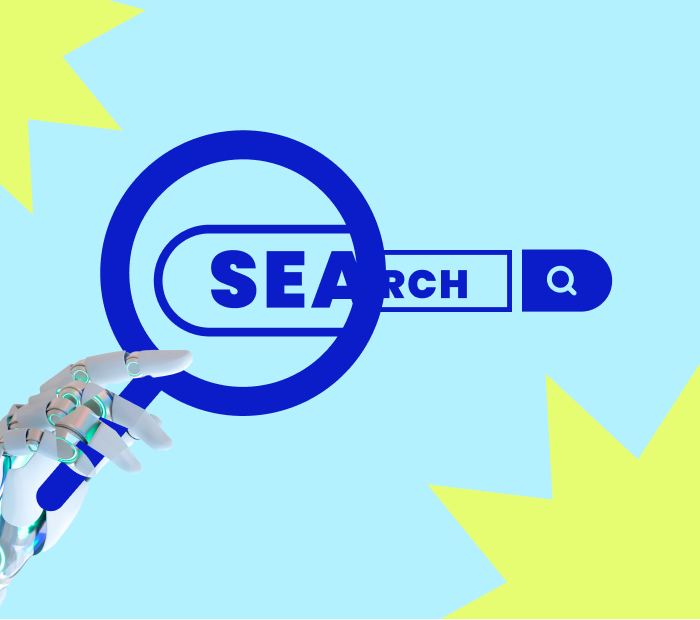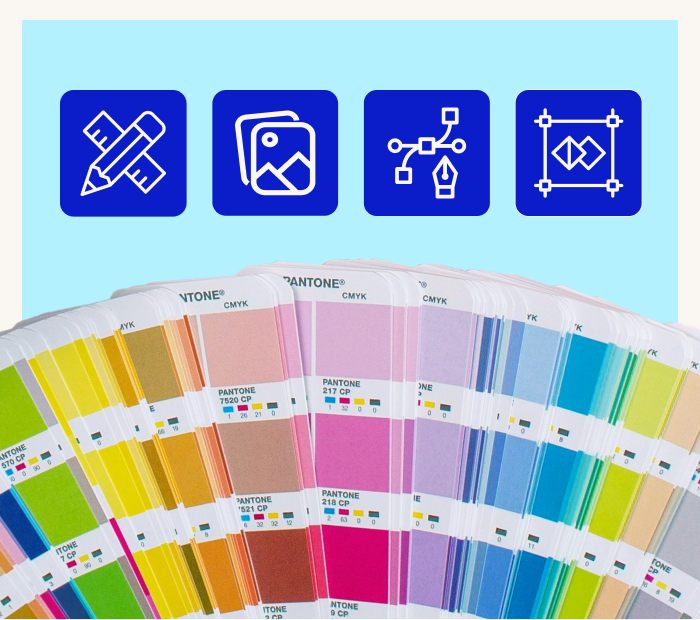
The Synergy of Web Design and Development
Web design and development are related and must work together to create a successful website. Without good design, the website will look unprofessional and unfriendly. Designers have the skills and know-how to create a visual representation of the website, brand collateral needed and icons used onsite, considering the user experience, user journey and target market. They generally have a pre-set brand guideline (or can create this) to decide how it should look, what and how colours should be used, and what type of fonts to use to create an attractive and easy-to-use site.
Designers often work in collaboration with developers in order to know whether the creative suggestions would be possible within the CMS or how the customised implementation will impact the budget.
Web developers consist of back-end and front-end developers who have the knowledge to turn the designs into a functioning website. While front-end developers work mainly in the CMS to ensure the website looks and functions like it is intended, back-end developers build the back-end of websites by creating code for databases, servers, apps and other technologies that powers your online businesses. They also collaborate with web designers to ensure that their designs will work on different devices like mobile phones or tablets and desktop computers. H2: Understanding Web Design
What is Web Design?
Web design uses different elements and techniques to create an interactive and functional website. These design elements are layout, colour scheme, typography, imagery and navigation. Layout determines how the different elements fit together, while the colour scheme is the selection of colours used. Typography involves choosing fonts, sizes, and spacing of text, while imagery uses visuals to improve design. Navigation determines how people move around the website easily without problems.
Role of a Web Designer
A web designer focuses mainly on the visual aspects of a website. They must understand the user experience (UX) and user interface (UI) design principles to ensure that the website’s layout is easy to navigate and visually appealing while meeting the client’s requirements.
- Create sitemaps, wireframes and design prototypes to outline the structure, navigation, and overall user experience.
- Select colour schemes, typography, and graphical elements to create a visually appealing and consistent design.
- Collaborate closely with web developers throughout the development process.
- Gather feedback, analyse user behaviour, and make necessary adjustments to improve the design and user experience.
Stay updated with the latest design trends, tools, and technologies to create modern and innovative UX/UI designs.
Understanding Web Development
What is Web Design?
Web development refers to back-end development which involves creating behind-the-scenes functionality of a website. It consists of a combination of programming, coding, and server-side technologies to create functional and interactive online platforms. This enables the site to perform actions like storing and retrieving data, serving content to users, and handling user interactions. This is done using programming languages like PHP, Python and Ruby.
Role of a Web Designer
Back-end developers have a lot of responsibilities when it comes to creating, maintaining, and optimising websites and web applications. Here are some key roles and responsibilities of a web developer:
- Responsible for managing server-side programming, maintaining server infrastructure, and designing APIs to support front-end functionality.
- Responsible for coding and building websites based on the specifications provided by clients.
- Utilise databases to effectively store and retrieve data.
- Ensure the security of the website and protect user data. They implement security measures to prevent common vulnerabilities such as cross-site scripting (XSS), SQL injection, and cross-site request forgery (CSRF).
- Perform thorough testing and debugging to identify and fix any issues or errors in the website’s functionality, performance, and compatibility.
- Ensure that the website remains secure, up-to-date and optimised for performance.
Web Design vs Web Development
Differences Between Web Development and Designin
While web design and development are related, there are key differences between the two fields. Web designing focuses on the visual aspects of a website, while web development concentrates on the technical aspects. Web designers use graphic design software like Figma, Sketch or Adobe Photoshop to create website layouts, while web developers use programming languages to code and optimise websites. Web designers must ensure that the website is user-friendly and aesthetically pleasing. In contrast, web developers must ensure that the website is operational and functions as expected and responsive to various devices.
Overlap Between Website Design and Development
There are many areas of similarities between the disciplines of website design and development. User experience (UX) is one of these areas, where both designers and developers work together to create an enjoyable and engaging user journey. To create intuitive interfaces, designers consider user behaviour and usability principles. Meanwhile, developers make sure that the design aspects are executed correctly, creating a seamless user experience. Responsive design is another common feature, where designers create layouts that adjust to various screen sizes, and developers use responsive coding methods to guarantee consistent appearance across devices.
Collaboration Between Web Developer and Designer
Collaboration between designers and developers is essential at every stage of the process to transform the creative concept into workable code. Designers and developers are concerned with optimisation since they want to improve efficiency by optimising aesthetic components and backend code, respectively. Another area of agreement is the iterative process of improvement, where designers and developers work together to gather input and make necessary improvements. Additionally, designers and developers both contribute to content integration, ensuring that the content is managed and presented attractively.
Benefits of Working with a Web Design and Development Agency
Web development agencies for web design and development offer several benefits and advantages. Here are some key benefits of collaborating with a professional agency for your website project:
Expertise and Skill Diversity
Web design and development companies have teams of experts with diverse skills. They have developers with technical skills and designers who make user-friendly interfaces. Going with an agency means you get access to various skills and viewpoints. This ensures that your website is developed to the highest standards.
Faster Turnaround Time
Creating a website from scratch is time-consuming and requires a lot of energy. Businesses may struggle with this, especially with no in-house web development staff. Working with an agency can make the process faster thanks to their experience and expertise. While the website is being constructed, companies can concentrate on another important part of their business operations.
Equipped With Best Practices and Industry Insights
Web design and development agencies keep up with industry trends, technologies, and best practices. They have worked with many clients and can provide insights and recommendations for your project. Their expertise can help you make good design choices, improve user experience, and handle technical implementation.
Efficient Project Management
Web design and development agencies are experienced in managing website projects effectively. They have established workflows, processes, and project management tools to ensure smooth communication, timely delivery, and adherence to project milestones. Working with an agency frees you from the burden of project management, allowing you to focus on other aspects of your business.
Customised Solutions
A good agency knows that every client is different. They listen to your needs and learn about your business, target audience, and goals. Then they create a website that is unique to you and your brand and gives your visitors a personalised experience.
SEO Optimisation
Search engine optimisation (SEO) is crucial for businesses to attract organic website traffic. A development agency can help companies achieve their SEO goals by developing a website optimised for search engines. This involves incorporating keywords, meta descriptions, and other SEO techniques to improve a website’s ranking in search engine results pages.
Responsive Design
Businesses need a responsive website for users to access it on all devices. It’s important to have a responsive web design because of the increase in mobile users. A web design and development agency optimises your website for mobile devices, leading to a better user experience and more traffic.
Scalability and Flexibility
Agencies can handle different projects, big or small. They have the resources to adjust their team and meet your project requirements. Whether it’s a basic website or a complicated e-commerce platform, a web agency can provide the needed expertise.
Ongoing Support and Maintenance
Websites need ongoing support and maintenance to keep them running smoothly. Web design and development agencies offer these services to keep their clients’ websites up-to-date, secure, and functional. This includes updates, bug fixes, and preserving the site’s performance.
Transform Your Website with Butterfly's Expert Web Development and Design Services
With years of experience as a web design and development agency in Melbourne, Butterfly has helped countless businesses transform their online presence with a modern, responsive website that reflects their brand. Integrated with the latest technologies and trends in web design, Butterfly offers a customised platform that helps transform your website from an introductory online brochure into an interactive, user-friendly experience that engages visitors and converts them into loyal customers. Contact Butterfly today to experience our expert web development and design services.
Web Design and Development FAQs
Can one person handle both web design and web development?
A “full-stack developer” can handle both web design and web development. They possess skills in front-end and back-end development and design principles. A full-stack developer can create visual designs, code front-end interfaces, implement back-end functionality, manage databases, and optimise website performance. They know programming languages like HTML, CSS, JavaScript, and server-side languages like PHP, Python, or Ruby, and are familiar with frameworks, libraries, and tools used in web development.
How long does it take to design and develop a website?
Designing and developing a website can take anywhere from 1-12 months. The project size and complexity, the particular requirements and functionalities required, the level of customisation, the accessibility of content and resources, and the effectiveness of the development process can all affect how long it takes to build a website.
How much does web design and development cost?
The cost of website development is around $200 – $1000 and $50-$100 monthly to maintain. But if you hire a designer or developer, expect to pay up to $6,000 upfront and $1,000 per year to maintain it.




